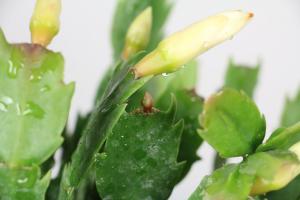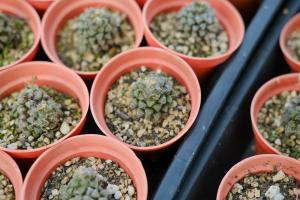How do plants lose water through transpiration?
Transpiration is a vital process in the life of plants. It is the process through which plants lose water from their leaves and stems into the atmosphere. This process is essential for plant survival, as it helps in the transportation of water and nutrients from the roots to different parts of the plant. In this article, we will discuss the various mechanisms involved in the process of transpiration.
Stomata: The Primary Channels for Transpiration
The primary channels for transpiration in plants are the stomata. They are small openings found on the surface of leaves and stems that allow the exchange of gases between the plant and the environment. The stomata are regulated by specialized cells called guard cells, which control their opening and closing. When the guard cells are open, water vapor is released from the plant into the atmosphere.
The Role of the Cuticle in Transpiration
The cuticle is a waxy layer that covers the leaves and stems of plants. It acts as a barrier to prevent water loss from the plant. However, some water is still lost through the cuticle via diffusion. The thickness of the cuticle varies depending on the species of the plant and the environmental conditions. Plants that live in arid environments have thicker cuticles to prevent excessive water loss.
The Movement of Water Through the Plant
Water moves through the plant in a continuous cycle. It is absorbed by the roots and transported through the xylem to the leaves. In the leaves, the water evaporates through the stomata, and the resulting water vapor is released into the atmosphere. This water vapor contributes to the humidity of the surrounding air.
The Effect of Environmental Factors on Transpiration
Environmental factors such as temperature, humidity, and wind can affect the process of transpiration. Warm temperatures increase the rate of transpiration, as it causes the water to evaporate faster. Low humidity levels also increase transpiration rates since the water vapor will diffuse more readily into the dry atmosphere. Wind can increase transpiration by removing moisture from the surrounding air, creating a low-pressure area around the leaves, which causes more water loss.
Conclusion
Transpiration is an essential process for plants as it helps in the transportation of water and nutrients within the plant. The process of transpiration occurs primarily through the stomata, but the cuticle also plays a role in preventing excessive water loss. Understanding the mechanisms involved in transpiration is crucial in designing strategies to improve crop yields and mitigate the effects of climate change on plant growth and survival.

 how many times do yo...
how many times do yo... how many planted tre...
how many planted tre... how many pine trees ...
how many pine trees ... how many pecan trees...
how many pecan trees... how many plants comp...
how many plants comp... how many plants can ...
how many plants can ... how many plants and ...
how many plants and ... how many pepper plan...
how many pepper plan...






























